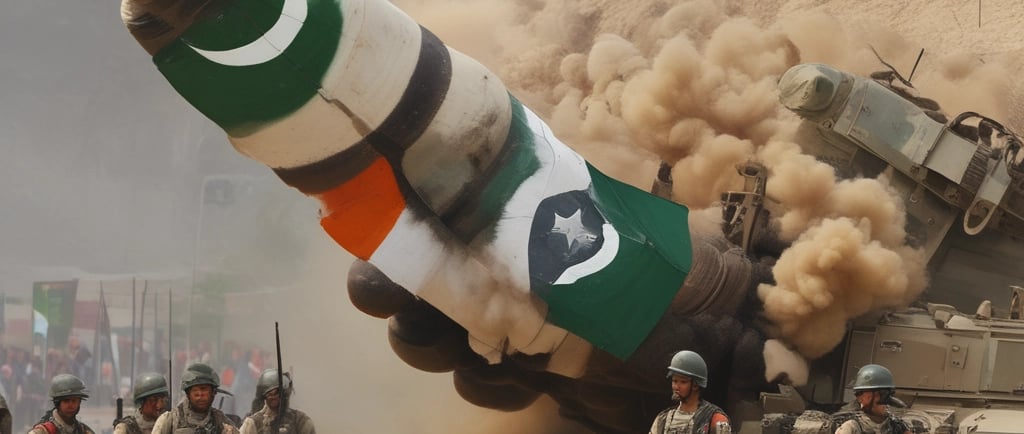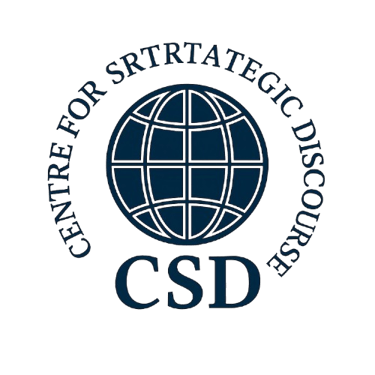Add your promotional text...
Bullets or Bread? Why India and Pakistan Must Choose Development Over Destruction
This opinion piece by Zahoor Ali, Executive Director of the Centre for Strategic Discourse (CSD), argues that India and Pakistan must urgently shift from militarized posturing to developmental cooperation. Drawing on economic data and historical precedent, the article highlights how rising defense spending, water weaponization, and regional hostility are pushing both nations toward humanitarian and economic catastrophe. Instead, Ali calls for a citizen-driven mandate for peace, investment in human development, and a regional vision grounded in shared prosperity over perpetual conflict.
By Zahoor Ali, Founder & Executive Director, Centre for Strategic Discourse (CSD), Islamabad
5/20/20253 min read


Despite their rich histories, cultural depth, and vast human potential, India and Pakistan remain shackled to a regressive arms race—one that continues to drain precious public resources while tens of millions languish in poverty. The latest World Bank data presents a sobering picture: while India is making strides in poverty reduction, it still battles deep inequality and underemployment. Pakistan, meanwhile, teeters dangerously close to economic collapse, with nearly 43% of its population living below the poverty line.
Yet, both countries remain obsessed with militarization, pouring billions into weapons, drones, and fighter jets—resources that could otherwise uplift their citizens through investment in healthcare, education, infrastructure, and human development.
Misplaced Priorities in a Fragile Economic Climate
India’s defense budget for 2025–26 stands at ₹6.81 lakh crore ($78.8 billion). A full 72% of this budget is dedicated to salaries, pensions, and maintenance—leaving little room for wartime flexibility. A hypothetical 42-day conflict would cost India ₹49,000 crore ($5.9 billion)—enough to fund sweeping welfare schemes, rural electrification, or national digital infrastructure.
Pakistan’s position is even more precarious. Defense spending absorbs 26% of its federal budget, while its foreign reserves barely cover two months of imports. A 42-day conflict would cost Islamabad $1.5 billion, or 15% of its $10 billion reserves, deepening its fiscal crisis and endangering the fragile gains from the $3 billion IMF bailout.
Meanwhile, 10 million Pakistanis face acute food insecurity. Crop failures, erratic rainfall, and fertilizer shortages have reversed agricultural growth. Yet, even in the face of widespread hunger, Islamabad prioritizes arms procurement over irrigation projects or domestic food production.
Water as a Weapon: A Catastrophic Gamble
India’s suspension of the Indus Waters Treaty—a pact that has endured wars and diplomatic standoffs since 1960—has escalated the stakes dangerously. Pakistan’s agrarian economy, which contributes 22.7% of GDP and employs 37.4% of its workforce, depends on the Indus Basin to irrigate 90% of its cropland. Disruption of river flows would jeopardize $4.8 billion in wheat, rice, and cotton exports and trigger food inflation potentially exceeding 38.5%, risking famine in Punjab’s breadbasket.
India, too, would not be spared. Weaponizing water invites international condemnation and could destabilize its own Kashmir-based apple and saffron industries, both dependent on shared rivers. A similar move by Turkey—when President Erdoğan blocked water to Kurdish regions—was met with heavy global backlash, illustrating the moral and diplomatic costs of such actions.
The Opportunity Cost of Militarization
Every bullet fired is a hospital left understaffed. Every missile launched is a school left unfinished. The human cost of war is immense. During the 1999 Kargil War, over 1,000 soldiers lost their lives. A modern war, waged with drones and hypersonic missiles, would dwarf these losses—while also wiping out civilian infrastructure, halting supply chains, and upending the economy.
The opportunity cost is perhaps even more tragic. Mass conscription in Pakistan—where youth unemployment exceeds 7%—would devastate the labor force. In India, the burgeoning $245 billion tech industry risks a brain drain as skilled workers emigrate in anticipation of instability.
Both nations already neglect human development. Pakistan spends three times more on defense than on education and healthcare combined. India’s defense allocation of 1.9% of GDP competes directly with social welfare. War would only cement this imbalance, delaying India's progress on SDG targets and derailing Pakistan’s IMF-mandated $7 billion reform program.
A Lesson from Europe: Dialogue Over Destruction
Europe’s post-war transformation offers a powerful lesson. Nations that once fought brutal wars now share borders, economies, and infrastructure through the European Union. Their prosperity is rooted not in militarism, but in cooperation and regional integration.
South Asia must chart a similar course. Shared history, culture, and geography should be assets—not triggers for conflict. Peaceful coexistence isn’t just a utopian vision; it’s an economic necessity.
The Path Forward: A Citizens’ Mandate for Peace
The political elites on both sides may lack the courage to prioritize peace—but the people can demand it. Civil society, academia, youth leaders, and the press must collectively pressure both governments to invest in schools, hospitals, and solar panels—not submarines and airbases.
Redirecting even a fraction of military expenditure could revolutionize public services. Imagine a region where children learn in well-equipped schools, farmers irrigate with modern systems, and hospitals offer world-class care. These are not fantasies—they are lost possibilities, hijacked by perpetual brinkmanship.
This is not a call for naïveté. National defense has its place. But to militarize at the cost of national survival is a betrayal of the very citizens a state claims to protect.
It’s time to choose. Bullets or bread. Bombs or books. War or welfare.
Stay informed with our latest project news.
Connect
info@strategiccentre.org
© 2025. All rights reserved.
media@strategiccentre.org
Terms & Policy
Stay UPDATED
